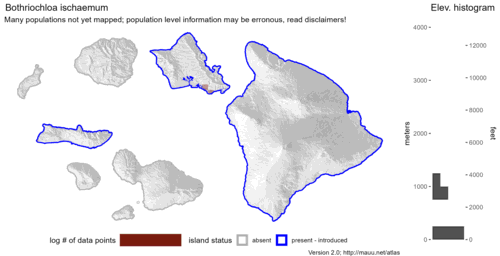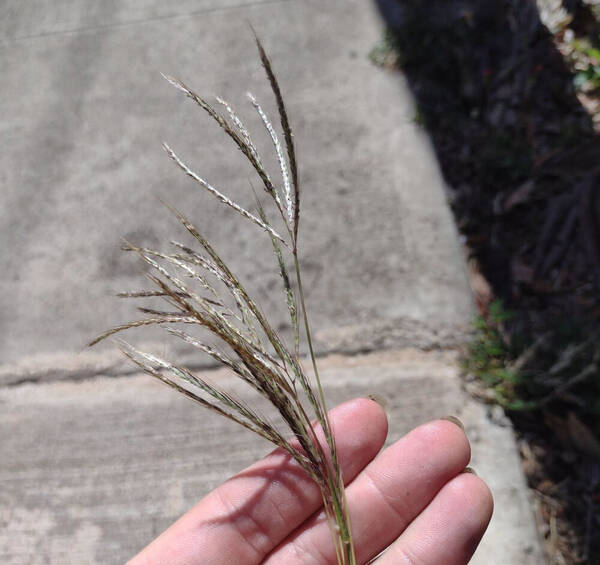Info
Subfamily: Panicoideae
Genus etymology: Bothriochloa = "pitted grass" [Greek] refering to the pits on the lower glume in most species
Species etymology: ischaemum = "styptic" [Latin] refering to a supposed ability to stop bleeding
Photosynthetic type: C4 (warm season)
Nativity: naturalized - intentional
First recorded in Hawaiʻi: 1950
Map

Inflorescence

Description
Plants usually cespitose, occasionally stoloniferous or almost rhizomatous under close grazing or cutting. Culms 30–80(–95) cm, stiffly erect; nodes glabrous or short hirsute. Leaves tending to be basal; ligules 0.5–1.5 mm; blades 5–25 cm long, 2–4.5 mm wide, flat to folded, glabrous or with long, scattered hairs at the base of the blade. Panicles 5– 10 cm, fan-shaped, silvery reddish-purple; rachises 0.5–2 cm, with (1–)2–8 branches; branches 3–9 cm, longer than the rachises, erect to somewhat spreading from the axillary pulvini, usually with only 1 rame; rame internodes with a central groove narrower than the margins, margins ciliate, with 1–3 mm hairs. Sessile spikelets 3–4.5 mm, narrowly ovate; lower glumes hirsute below, with about 1 mm hairs, lacking a dorsal pit; awns 9– 17 mm, twisted, geniculate; anthers 1–2 mm. Pedicellate spikelets about as long as the sessile spikelets, but usually narrower, sterile or staminate. 2n = 40, 50, 60.
(Description source: Barkworth, M.E., Capels, K.M., Long, S. & Piep, M.B. (eds.) 2003. Flora of North America, north of Mexico. Volume 25. Magnoliophyta: Commelinidae (in part): Poaceae, Part 2. Oxford University Press, New York. 783 pp http://floranorthamerica.org/Bothriochloa_ischaemum )